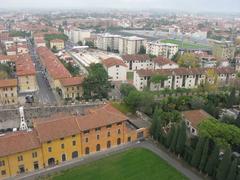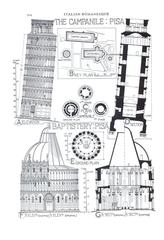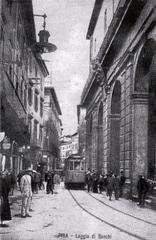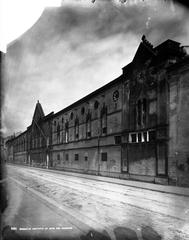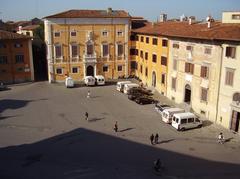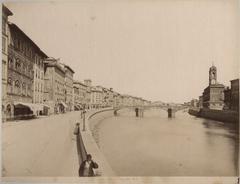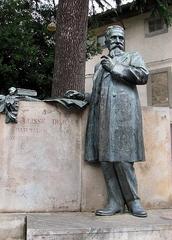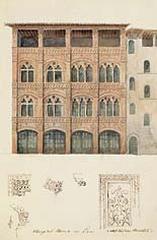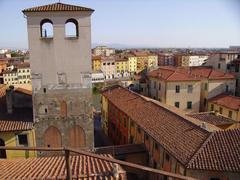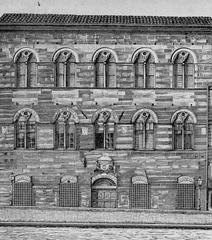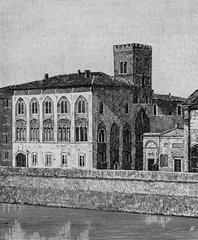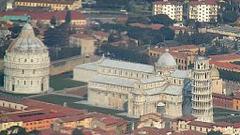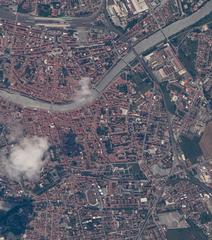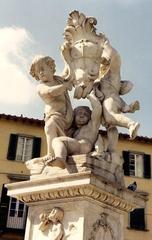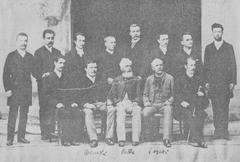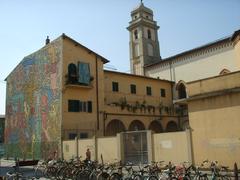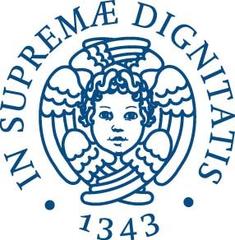Palazzo Venerosi Pesciolini: Visiting Hours, Tickets, and Historical Information in Pisa, Italy
Date: 14/06/2025
Introduction
Palazzo Venerosi Pesciolini is a distinguished landmark that encapsulates centuries of aristocratic tradition, architectural refinement, and cultural influence in Pisa. Located centrally on Corso Italia, the palazzo reflects the enduring legacy of the Venerosi Pesciolini family—one of Tuscany’s oldest noble houses with roots tracing back to the Carolingian era (Tenuta di Ghizzano; La Verde Armonia). This guide provides an in-depth exploration of the palazzo’s history, architecture, and visitor information, as well as its evolving role in Pisa’s urban and rural landscapes.
Historical Overview
The Venerosi Pesciolini Family: From Medieval Origins to Modern Nobility
The family’s documented history dates to 803 A.D., when their ancestors served as vicedomini in the Tuscan territory of Strido under the Bishop of Volterra (La Verde Armonia). Over the centuries, the Venerosi Pesciolini rose from merchants trading olives across Europe to noble landowners with significant social and political influence (Tuttomondo News). The evolution of their surname—from Pecciolini to Pesciolini—reflects their commercial legacy and regional integration.
Following a period of retreat during political upheaval in the 15th century, the family regained stature in the 16th and 17th centuries, acquiring the palazzo that would become their urban seat (Wikipedia).
Architectural Evolution
Exterior and Urban Context
Located on Corso Italia, Palazzo Venerosi Pesciolini’s façade embodies Renaissance symmetry and classical elegance, with a grand portal and harmonious window arrangements crafted from local stone. The building’s integration into Pisa’s historic center underscores the family’s prominence and civic engagement (The Crazy Tourist).
Interior Features and Artistic Legacy
Although the interior is rarely open to the public, historical records and architectural studies suggest the presence of grand reception halls, frescoed ceilings, and period furnishings—hallmarks of noble Pisan residences. The family coat of arms, featuring a black and silver upper field and a red fish, is prominently displayed, symbolizing lineage and heritage (La Verde Armonia).
Gardens and Restoration
Between 1825 and 1828, Alessandro Gherardesca designed an English-style garden for the palazzo, with statues, bridges, and religious tabernacles attributed to renowned artists (Tuttomondo News). Restoration projects continue to preserve both architectural integrity and the palazzo’s role in cultural tourism (Archiloop).
Social and Cultural Functions
Historic and Contemporary Roles
Historically, the palazzo was a hub for social gatherings, artistic patronage, and political activity, hosting figures such as Count Alexei Orlov and composer Johann Sebastian Bach. In modern times, the family remains engaged in regional development, with Ginevra Venerosi Pesciolini leading the Consorzio Vini Terre di Pisa (Italia a Tavola).
The Rural Estate: Tenuta di Ghizzano
The family’s rural seat at Ghizzano, owned since 1370, operates as a model of sustainable agriculture and cultural preservation. The Tenuta di Ghizzano estate is open to visitors, offering tours, wine tastings, and immersive experiences in Tuscan rural life (Corriere Romagna).
Practical Visitor Information
Location
Palazzo Venerosi Pesciolini is centrally located in Pisa’s historic district, within walking distance of major attractions like Piazza dei Miracoli and the Leaning Tower. The area is accessible by foot, local bus, or taxi (The Geographical Cure).
Visiting Hours and Tickets
- Urban Palazzo: As of June 2025, the palazzo remains a private residence and is generally not open to the public except during special events (e.g., European Heritage Days). Public access to interiors is limited and requires advance booking through Pisa’s tourist information office or official city website (Pisa Tourist Information).
- Tenuta di Ghizzano: The estate is open Wednesday through Sunday, 10:00 AM to 6:00 PM. Tickets (€15 general admission; €25 for guided tour and wine tasting; children under 12 free) and reservations can be secured online or at the entrance (Tenuta di Ghizzano Official Website).
Guided Tours and Events
Guided tours of both the palazzo (during special openings) and the estate offer insights into history, architecture, and viticulture. Early booking is recommended due to limited capacity. Special events, such as art exhibitions and harvest festivals, are advertised via official channels and local tourism offices.
Accessibility
- The urban palazzo’s exterior is accessible and situated on paved streets suitable for wheelchairs and strollers; interior access is limited.
- At Tenuta di Ghizzano, most public areas are accessible, though some historic spaces may have constraints. Notify staff about special needs when booking.
Nearby Attractions
Combine a visit to Palazzo Venerosi Pesciolini with other Pisa highlights, including:
- Piazza dei Miracoli
- Piazza dei Cavalieri
- Museo Nazionale di San Matteo
- University of Pisa Botanical Gardens (The Thinking Traveller)
Visitor Tips and Recommendations
- Timing: Visit during shoulder seasons (spring/fall) for fewer crowds and special events.
- Photography: The palazzo’s façade and gardens are ideal for photographs; tripods are discouraged on busy sidewalks.
- Respect Privacy: The palazzo is partially residential—please respect posted boundaries and the privacy of occupants.
- Transport: Pisa is best explored on foot; parking is available at Piazza dei Miracoli or Via Pietrasantina.
Frequently Asked Questions (FAQ)
Q: Can I visit the interior of Palazzo Venerosi Pesciolini?
A: Interior access is limited to special openings or events. Check Pisa Tourist Information for announcements.
Q: How do I book tickets for Tenuta di Ghizzano?
A: Book via the Tenuta di Ghizzano Official Website or at the entrance. Reservations are recommended.
Q: Is the palazzo accessible to visitors with disabilities?
A: The exterior is accessible; Tenuta di Ghizzano offers ramps and assistance in most areas.
Q: What are nearby attractions?
A: The Leaning Tower, Piazza dei Cavalieri, and Santa Maria della Spina are all within walking distance.
Q: Are tours available in English?
A: Tours are often in Italian; inquire in advance about English-language options.
Visual Suggestions
- Photos of the palazzo’s façade and English-style gardens with descriptive alt tags (e.g., “Palazzo Venerosi Pesciolini façade, Pisa historical sites”; “Palazzo Venerosi Pesciolini visiting hours”).
- Map of Pisa showing the palazzo and surrounding attractions.
- Images of Tenuta di Ghizzano’s vineyards and cultural events.
Further Resources
- Tenuta di Ghizzano, Family History
- La Verde Armonia, Family Legacy
- Tuttomondo News, Palazzo History
- Wikipedia, Palazzo Venerosi Pesciolini
- Corriere Romagna, Seven Centuries of Wine
- The Crazy Tourist, Pisa Attractions
- Italia a Tavola, Consorzio Vini Terre di Pisa
- The Geographical Cure, Pisa Travel Tips
- Pisa Tourist Information
Summary and Final Recommendations
Palazzo Venerosi Pesciolini offers a window into Pisa’s noble history, architectural splendor, and vibrant cultural traditions. Whether admiring its façade, exploring its gardens, or visiting the Tenuta di Ghizzano estate, travelers gain a unique perspective on Tuscany’s aristocratic heritage and sustainable rural life. For the most current information on visiting hours, guided tours, and events, consult official resources or download the Audiala app for interactive experiences and expert insights.
Plan your visit, immerse yourself in centuries of history, and discover why Palazzo Venerosi Pesciolini remains a must-see among Pisa’s historical sites.
